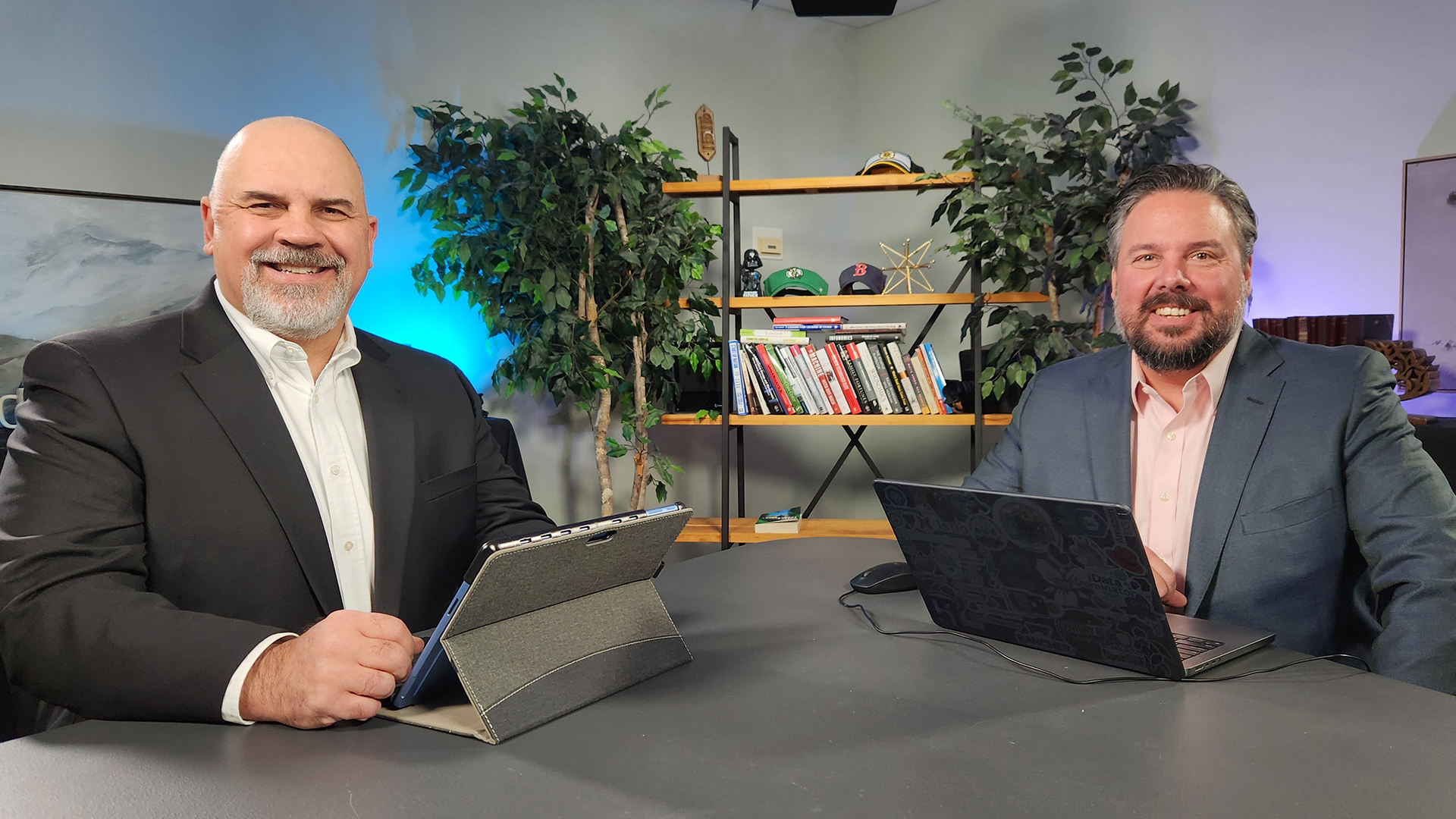 AI
AI
 AI
AI
 AI
AI
Quantum computing is accelerating advancements in technology, standing alongside artificial intelligence and next-generation networking to reshape how industries operate.
While AI has shifted from an emerging concept to a pivotal tool for businesses, quantum computing is steadily evolving, offering solutions to some of the world’s most complex challenges. At the same time, innovative networking technologies, such as hollow-core fiber, are driving progress by meeting the demands of increasing data flows, according to Bob Laliberte (pictured, left), principal analyst at theCUBE Research.
“Hollow-core fiber essentially enables organizations to carry more capacity over greater distances with a lower latency,” Laliberte said. “It just seems like this is a technology that everyone is going to be implementing. Microsoft is saying, ‘Hey, this is a great application for it in those backend AI data centers,’ and not only within the data center, but across data centers and being able to stretch that out.”
Laliberte joined fellow analyst Rob Strechay (right) for an analysis of the Microsoft Ignite keynote, during an exclusive broadcast on theCUBE, SiliconANGLE Media’s livestreaming studio. They discussed how advancements in quantum computing, artificial intelligence and next-generation networking are driving innovation while emphasizing the need for security, governance and observability in increasingly complex IT environments.
AI’s holds a dual role as both a maturing technology and one in its infancy, depending on perspective. While traditional AI systems have been in development for decades, the generative AI wave is just beginning to crest. For its part, Microsoft’s focus remains on integrating AI into tools such as Microsoft 365 Copilot and its broader Azure ecosystem, according to Strechay.
“I think one of the things that ties into that was the AI foundries,” he explained. “I thought the examples were very agentic-oriented, not about really fine-tuning or really bringing your data together, other than when they started to talk about Azure Fabric. The big announcement there was bringing Microsoft SQL Server to Azure Fabric. I thought that was interesting but expected.”
These innovations are designed to optimize operations and unlock new possibilities for data analysis and productivity. However, as the conversation noted, challenges such as securing AI models and establishing clear governance frameworks remain top priorities, Laliberte explained.
“I think that the key here is that with the observability as the environments, all the research that I’ve been doing talks about how organizations are really concerned that the environment is getting so much more complex because it’s far more distributed, there’s a lot more data that has to be managed,” he added. “Having the ability to have visibility into this highly distributed environment … [is] going to be important for organizations.”
Microsoft’s collaboration with Atom Computing Inc. has yielded promising advancements, including achieving greater reliability with 24 qubits in a commercially neutral environment. These developments signify progress toward making quantum solutions accessible to a broader audience, potentially solving some of the world’s most complex challenges.
“I thought the quantum stuff was a good call out,” Strechay said. “I thought that was really forward-leaning and about how they were making it real. I think it also ties back to some of the things that we didn’t hear about. There was not a lot about Azure Stack HCI. There was not a lot about observability, and I know we both covered different perspectives of it. I know we’re going to have a lot of people talking about this, a lot of the partner ISVs on today that are going to really dive deep into these topics.”
Security emerged as a recurring theme throughout the keynote. The rapid evolution of technology has amplified the importance of protecting AI models and addressing AI-driven threats. Microsoft’s efforts to strengthen its security posture reflect the industry’s broader challenge: staying ahead of increasingly sophisticated malicious actors while ensuring trust in new technologies, according to Laliberte.
“Security is going to be incredibly important for these environments,” he said. “The white hats need to be able to leverage this technology, and they really need to make significant investments in it so that they can ensure that any of these models, any of the AI that they deploy, is going to be properly secured.”
Here’s the complete video interview, part of SiliconANGLE’s and theCUBE Research’s coverage of Microsoft Ignite 2024:
Support our mission to keep content open and free by engaging with theCUBE community. Join theCUBE’s Alumni Trust Network, where technology leaders connect, share intelligence and create opportunities.
Founded by tech visionaries John Furrier and Dave Vellante, SiliconANGLE Media has built a dynamic ecosystem of industry-leading digital media brands that reach 15+ million elite tech professionals. Our new proprietary theCUBE AI Video Cloud is breaking ground in audience interaction, leveraging theCUBEai.com neural network to help technology companies make data-driven decisions and stay at the forefront of industry conversations.